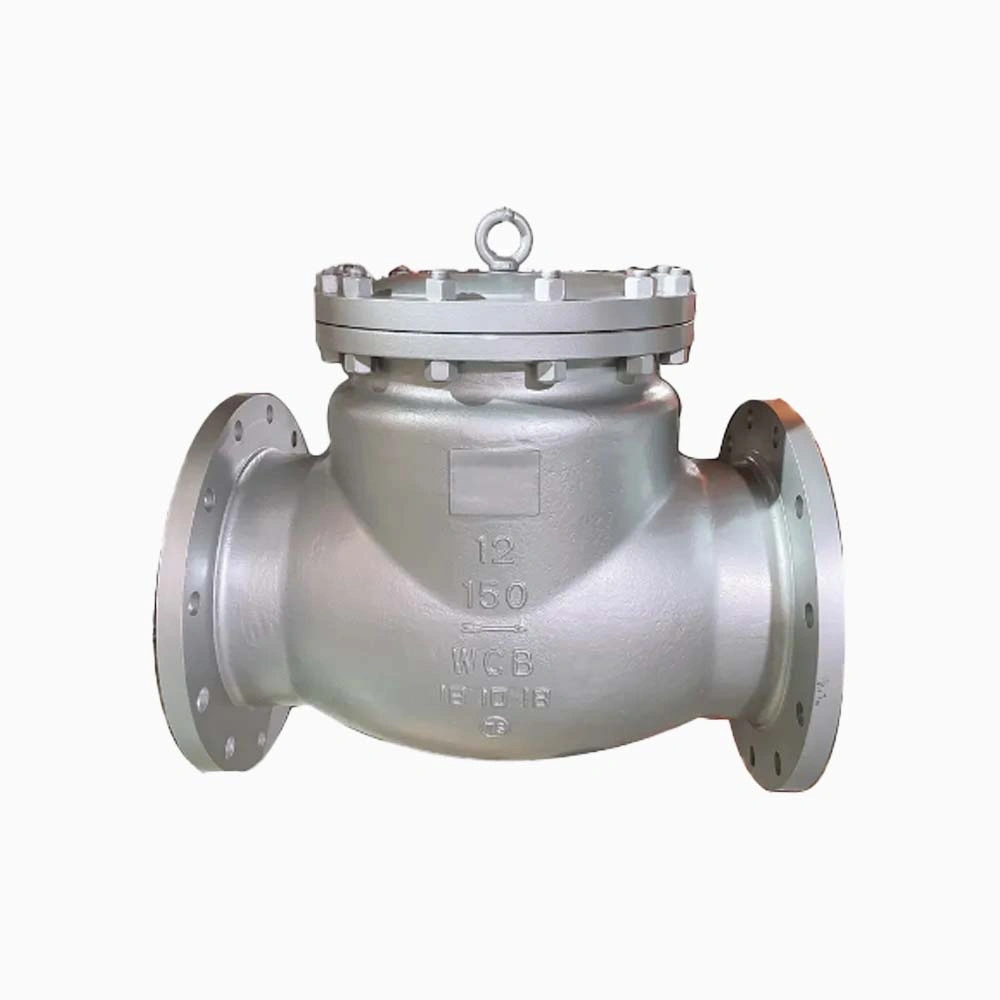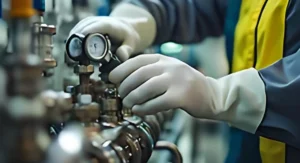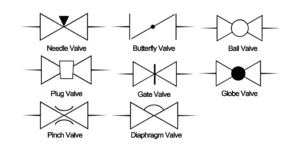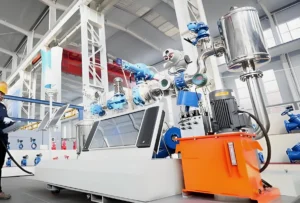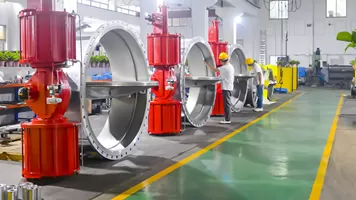In fluid control systems, ensuring that the flow of liquid or gas is properly managed is crucial for both efficiency and safety. One essential component that plays a vital role in many industrial applications is the check valve. But the question often arises: are check valves necessary for every system, or are there circumstances where they can be omitted?
This article delves into the necessity of check valves, their functions, common misunderstandings, installation considerations, and how they contribute to the efficiency of fluid systems. We will also examine their importance in different industries, such as water treatment, oil and gas, and HVAC systems, and provide insights into selecting and maintaining the right check valve for your specific needs.
Are Check Valves Necessary?
Check valves play a vital role in many fluid systems, especially in areas such as piping, hydraulics and industrial processes. The main function of these valves is to allow fluid to flow in one direction while preventing reverse flow. When deciding whether to install a check valve in a system, engineers and designers take into account the type of fluid, pressure, temperature, flow rate, and the need to prevent backflow to meet the specific requirements of the system.
Why Are Check Valves Essential?
Check valves serve the primary function of allowing fluid to flow in one direction while preventing backflow. This one-way flow mechanism is crucial in preventing contamination, protecting pumps, and maintaining system pressure. Without a check valve, the risks of reverse flow can cause serious issues, such as:
- Damage to Equipment: Backflow can damage delicate components such as pumps, which rely on a steady flow in one direction.
- Contamination: In systems dealing with water treatment, chemicals, or food processing, backflow can lead to cross-contamination of fluids, which can compromise safety and quality.
- System Instability: Reverse flow can destabilize the system, leading to pressure fluctuations that could cause pipe bursts or system malfunctions.
When Are Check Valves Not Necessary?
There are cases where check valves are not necessary or might not be required in certain applications. For example:
- Gravity-Driven Systems: In some systems where gravity forces the fluid to flow in a single direction (such as in vertical pipes or large water towers), check valves may not be essential.
- Controlled Flow Systems: If the system has other means of controlling fluid direction—such as automated flow control devices or specialized pumps—check valves might be redundant.
Nevertheless, for most fluid systems, check valves are indispensable components that help maintain safety, prevent backflow, and improve operational efficiency.
The Basic Function of Check Valves
The primary purpose of a check valve is simple yet critical: it allows fluid to flow in one direction while preventing backflow. This mechanism is designed to operate without external control, relying solely on the flow of the fluid to open and close the valve.
Working Principle of a Check Valve
Check valves operate through the use of a movable component, such as a ball or disc, that opens when the fluid is flowing in the correct direction. When the flow reverses, the component closes, preventing the fluid from returning.
This self-regulating design ensures that once the fluid moves in the intended direction, it cannot flow backward, protecting the system from the dangers associated with backflow.
Types of Check Valves
There are several different types of check valves, each suited to specific applications:
- Swing Check Valve: This is the most common type, featuring a disc that swings open when the flow moves in the correct direction and swings shut to prevent backflow.
- Ball Check Valve: This valve uses a ball to seal the valve seat and prevent reverse flow. It is often used in low-pressure systems.
- Lift Check Valve: Similar to a swing valve but the disc is lifted off the valve seat instead of swinging. It is commonly used in high-pressure systems.
- Wafer Check Valve: Compact and lightweight, ideal for tight spaces, commonly used in the water treatment industry.
When selecting a check valve, it is essential to consider factors like the fluid type, pressure, temperature, and flow rate to ensure the valve functions optimally within the system.
Applications of Check Valves Across Industries
Check valves are essential in numerous industries where fluid flow must be carefully controlled to prevent damage, contamination, or inefficiencies. Below are some examples of where check valves are indispensable:
Water Treatment
In water treatment facilities, check valves are used to prevent backflow from occurring, which could lead to contamination of clean water supplies. For example, check valves are often used to isolate pumps and ensure that water moves only in the intended direction. This is especially critical in municipal water treatment systems where the quality of drinking water is of utmost importance.
Oil and Gas
The oil and gas industry relies heavily on check valves to maintain the integrity of pipelines, storage tanks, and pressure vessels. These valves prevent the reverse flow of oil or gas, which could damage equipment, cause hazardous spills, or compromise pipeline integrity. Whether it is for upstream, midstream, or downstream operations, check valves are vital for protecting both human safety and environmental health.
HVAC Systems
In heating, ventilation, and air conditioning (HVAC) systems, check valves are used to prevent water or refrigerant from flowing in the wrong direction. This helps maintain pressure stability within the system and ensures that each component functions as intended. Without check valves, HVAC systems could experience pressure losses, leaks, or even mechanical failures.
Misunderstandings and Common Problems with Check Valves
While check valves are widely regarded as essential components in fluid control, there are still several common misconceptions and issues that can arise with their use.
Misconception 1: Check Valves Don’t Require Maintenance
A frequent misunderstanding is that check valves are maintenance-free. While these valves are designed to function automatically, they still require regular inspection and maintenance to ensure that they continue to work properly. Over time, check valves can suffer from wear and tear, clogging, or corrosion, especially in harsh environments.
Misconception 2: Any Type of Check Valve Will Do
Another common myth is that any check valve can be used for any application. However, selecting the right type of valve for a specific system is crucial for optimal performance. Factors such as flow rate, pressure, temperature, and the type of fluid all influence the selection process. For example, using a ball check valve in a high-pressure steam system would not provide the required sealing and may lead to failure.
Common Problems
Check valves can also experience operational problems such as:
- Sticking or Jamming: Foreign particles in the fluid or improper installation can cause the valve components to get stuck.
- Leakage: Worn-out seals or incorrect installation can lead to leaks.
- Corrosion: In corrosive environments, check valves may corrode if not made of the appropriate material.
To avoid these issues, regular check valve maintenance and proper installation are essential to ensure long-term performance and efficiency.
Installation and Maintenance of Check Valves
Proper installation and maintenance of check valves are key to maximizing their lifespan and effectiveness. Below are some guidelines:
Installation Tips
- Ensure that the check valve is installed in the correct orientation, as reversing the direction can cause it to malfunction.
- Choose the appropriate check valve based on system specifications (pressure, temperature, and flow rate).
- Install the valve at the correct location in the system—typically near pumps or in areas where backflow prevention is crucial.
Maintenance Guidelines
- Regularly inspect check valves for signs of wear, corrosion, or clogging.
- Clean the valve periodically to remove debris that could impede the flow or cause the valve to malfunction.
- Replace damaged or worn parts to maintain optimal performance.
The Future of Check Valves
With the ongoing advancement of technology, the future of check valves looks promising. Smart check valves with built-in sensors, remote monitoring capabilities, and data analytics are becoming increasingly popular. These innovations allow operators to monitor valve performance in real time, predict maintenance needs, and enhance system efficiency.
Moreover, sustainability trends in industrial design are pushing the development of eco-friendly check valves that use fewer resources in manufacturing and are made from recyclable materials.
Conclusion
Check valves are essential components in many fluid control systems, providing protection against backflow, preventing contamination, and ensuring the smooth operation of pumps and pipelines. While there may be some cases where check valves are not necessary, for most industrial applications, they are indispensable.
By understanding the check valve types, selecting the right one for your system, and ensuring proper installation and maintenance, you can significantly improve the safety, efficiency, and longevity of your fluid systems. For companies like Tianyu Valves, offering high-quality check valves and expert support, investing in the right valve solutions is crucial to ensuring optimal performance in industrial operations.
If you’re looking for reliable and durable check valves for your systems, contact Tianyu Valves today and explore our extensive range of products designed to meet your needs.
Common questions about check valves
1. What happens without a check valve?
Without a check valve, water or fluid could flow in the opposite direction, potentially causing backflow or contamination. This could lead to system damage, equipment malfunction, or contamination of clean water supplies. In systems like plumbing, HVAC, and pumps, check valves help prevent reverse flow and protect equipment and the integrity of the system.
2. When should a check valve be installed?
A check valve should be installed when there is a need to prevent reverse flow or backflow in a system. This is important in applications where fluid needs to flow in one direction only, such as in pumps, pipelines, or water systems. Check valves are typically installed in areas where a reverse flow could cause damage to equipment, contamination, or inefficient operation.
3. Do you need a check valve on a water main?
Yes, check valves are often needed on water mains to prevent backflow from entering the main water supply. In cases where there are multiple connections or potential pressure changes, a check valve ensures that water flows in one direction and prevents backflow, which could contaminate the water supply or damage the infrastructure.
4. Does a well have to have a check valve?
Yes, a well typically needs a check valve to prevent water from flowing back into the well once it has been pumped out. The check valve ensures that the water remains in the system, maintains pressure, and prevents contamination or backflow into the well. This is especially important in well pumps that need to maintain constant pressure and prevent reverse flow.


